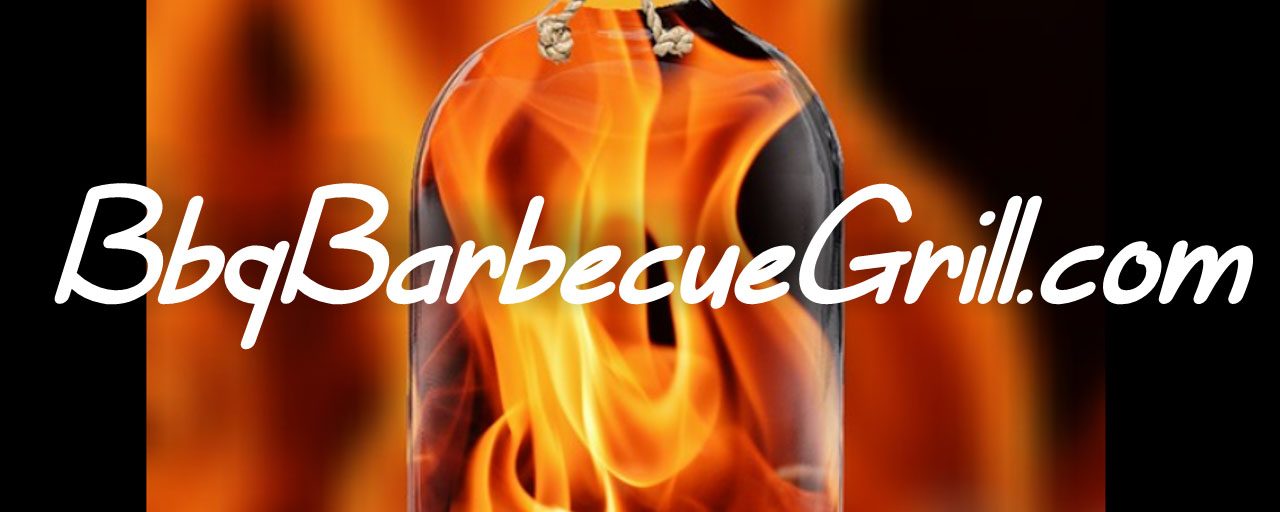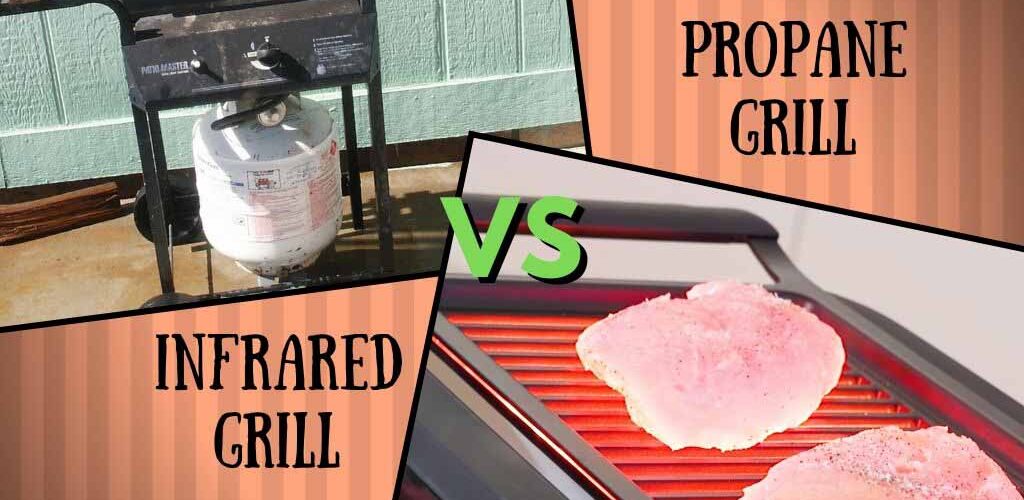If you are all tangled up in deciding whether to go for an infrared grill or a propane grill, then this post is going to help you a lot. In this comparison of infrared grills vs. propane grills, we will find out which one is better than the other while considering various factors.
Propane grills have been around for many years. In contrast, the infrared grills are the result of the recent innovations and developments in this industry.

Infrared grill vs. propane grill: The difference
| Infrared grills | Propane grills |
| The heat transfer principle from the source to the food here is radiation. | The principle of heat transfer, in this case, is convection. |
| Food cooks pretty fast while maintaining the juices and moisture in the food. | Loss of juices and moisture occurs, and the food comes out hard and dry. |
| Quick way of cooking food. | Cooking time is slower. |
| Very concentrated heat intensity throughout. | The heat transfer is not concentrated here. |
| The medium of heat is a gas or electric element. | Hot air is the medium of heat transfer. |
| More efficient heat time. | It requires more time to heat up. |
| The loss of fuel and heat is minimal. | The loss of fuel and heat is high. |
| Very flexible temperature control. | No flexibility in temperature control. |
| There’s no direct contact between fire and food. | There’s a direct contact between fire and food. |
| Easy to clean and low maintenance needed. | Not easy to clean, and high maintenance is needed. |
| Stronger safety mechanisms with meager chances of flare-ups. | Weaker safety mechanisms with high chances of flare-ups. |
| More healthy food. | Less healthy food. |

Infrared grill vs. propane grill: The comparison
Working
Infrared grills use radiation as a primary heat transfer mode, and there is a burner with a casing of stainless steel featuring a ceramic top. This type of construction and burner design guarantees uniformity in heat transfer over your grill. These grills use the heated element to transfer heat, which increases the temperature evenly and circulates the air across the grill in a stable manner. Therefore, you will get instant ignition and proper heat control. The result will be a better-tasting food cooked uniformly.
On the other hand, a propane grill uses convection as its primary heat transfer mode. Still, there is slight use of radiation and conduction as well. These grills have straightforward construction, and they have drip deflectors, burners, grates, and of course, the grill.
As you ignite the burners, heat convection occurs, and it rises in the air within the firebox. The ceramic plates and drip reflectors will absorb some part of heat energy and radiate it. They generate conduction heat as well that transfers to your food when it comes in contact.
Time & fuel efficiency

Infrared grills are far more efficient than propane grills because they don’t take much time in heating up. As you ignite an infrared burner, the temperature will rise to 1000 °F in less than a minute. Within a couple of minutes, the temperature will rise to 1400 °F.
Whereas, a propane grill will take some time to heat up and reach your desired temperature. Therefore, you will need a lot more time to cook your food on this grill. The maximum temperature that a gas grill can reach is 500 °F. If you cook your food for long periods, the food will turn hard and dry. It means that a propane grill will consume more of your fuel and time. So the winner here is the infrared grill.
Food taste
Taste is a fairly subjective factor when we talk about grilling or smoking foods. But as we have mentioned that propane grills need more time to cook the food. It will result in hard and dry tasting food. However, if you have plenty of experience in cooking on these grills, then you will be able to control the air and temperature to cook delicious recipes.
However, infrared grills are not far behind when it comes to food taste. You won’t have to deal with those dry and hard bites in this case. The only thing you need to be careful about is that when the food gets seared on the outside but the inside still needs to be cooked.
Sometimes, you wait a bit too long for the inside to cook. The outside gets seared a bit too much. More and more chefs across the globe prefer this method because it is efficient and takes less time and fuel but creates a flavor that is great but not as great as the results from a propane grill.
Safety
Safety is the feature where infrared grills beat the propane grills fair and square. The grates in an infrared grill are concave. It means that the fat drippings will remain out of the food during the searing process. Later on, the juices and moisture that stay on the grill vaporize with the burner’s heat and re-enter the food as flavored smoke.
It is a useful mechanism for preventing any flares from happening. These juices don’t drop over the flames as well. However, in a propane grill, this is not the case as the juices and the fat drips over the flames, and you will experience those flare-ups.
Temperature control
One of the best features of an infrared grill is that you can easily control the temperatures without any issues. You can conveniently adjust the temperature according to the type of meat, and you can use it in different types of BBQ cooking too.
It also allows you to sear, roast, grill, and do whatever you want with your meat. This convenience is not there in the case of propane grills because you are not able to control the temperature unless you have years and years of experience. Propane grills also present you with a problem of dealing with cold and hot spots, and the food is exposed to air too.
Health effect

There is some misconception that the infrared grills involve radiation, which is not suitable for health.
Whereas studies have found that infrared heat is healthy, and science is discovering new benefits of this heat to humans in several different ways. Another advantage of infrared grills is that the fat drips away without taking out too much moisture from the food.
Your food will remain healthy and will have less amount of fat, which is not the case in propane grills. In propane grills, the fat directly drips onto the fire, and unhealthy fumes develop, which can cause cancer. Therefore, it is better to use infrared grills, especially if you do BBQs quite frequently.
Final word
In this comparison of infrared grills vs. propane grills, the winner turns out to be the infrared grills by a fair margin. It is especially the case if you like to host barbecue cookouts quite frequently. Infrared grills are a lot more efficient than propane grills, and they are less hectic to set up as well.
There is so much on the offer when it comes to infrared grills in terms of convenience. The flavor that comes out of a propane grill will be a lot better, but you also need skills and expertise to produce that flavor. Other than that, propane grills also consume a lot of time and fuel.
So which one of the two are you going to use for your next outdoor cookout?


